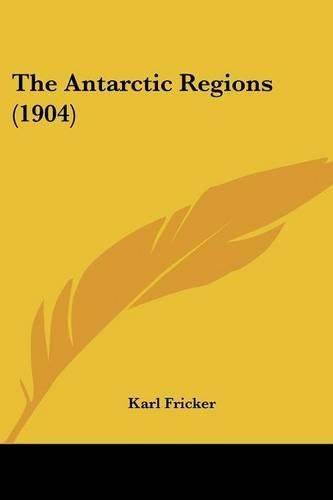Readings Newsletter
Become a Readings Member to make your shopping experience even easier.
Sign in or sign up for free!
You’re not far away from qualifying for FREE standard shipping within Australia
You’ve qualified for FREE standard shipping within Australia
The cart is loading…






Purchase of this book includes free trial access to www.million-books.com where you can read more than a million books for free. This is an OCR edition with typos. Excerpt from book: discoverer of the New World, and gave first to Brazil and subsequently to the whole continent the name of Terra Americi or America. Still it is by no means certain that the southern and insignificant discovery made by the Portuguese vessels did not secretly revive and perpetuate the myth of the great southern continent bounding the oceans and’ covering in the South Pole. THE NEW TERRA A USTRALIS AND THE PROOF OF ITS NON-EXISTENCE. Very soon after the exploration of the Brazilian coasts, several expeditions were made there, although the country had not the attraction of either gold or spices to offer. And these voyages seem to have been undertaken without the authority and probably without even the knowledge of the Portuguese Government. They are mentioned here simply because they revived the idea of the Ptolemaic Austral country, though now no longer supposed to be connected with either Asia or Africa, and projected farther across still unknown seas. At length a French vessel from Honfleur in Normandy, under the command of the Sieur Binot Paulmier de Gonneville, reached Brazil in 1504, though it cannot be ascertained at what point he landed. Gonneville, who brought back a young native on his return voyage, speaks in his account of the discovery of hitherto unknown
southern lands, and thus in the course of time these were sought to the south of the Cape of Good Hope instead of in Brazil. Somewhat later, about the years 1508-9, a widespread publication, obviously a translation from the Portuguese, appeared in Italy and Germany, called Copia der Newcn Zeytung aus Pressilgland. This gave an account of the voyage of two Portuguese ships to the Brazilian coast. They were stated to have reached a latitude of 40 S., and to have found straits on li of this account as a prelude …
$9.00 standard shipping within Australia
FREE standard shipping within Australia for orders over $100.00
Express & International shipping calculated at checkout
Purchase of this book includes free trial access to www.million-books.com where you can read more than a million books for free. This is an OCR edition with typos. Excerpt from book: discoverer of the New World, and gave first to Brazil and subsequently to the whole continent the name of Terra Americi or America. Still it is by no means certain that the southern and insignificant discovery made by the Portuguese vessels did not secretly revive and perpetuate the myth of the great southern continent bounding the oceans and’ covering in the South Pole. THE NEW TERRA A USTRALIS AND THE PROOF OF ITS NON-EXISTENCE. Very soon after the exploration of the Brazilian coasts, several expeditions were made there, although the country had not the attraction of either gold or spices to offer. And these voyages seem to have been undertaken without the authority and probably without even the knowledge of the Portuguese Government. They are mentioned here simply because they revived the idea of the Ptolemaic Austral country, though now no longer supposed to be connected with either Asia or Africa, and projected farther across still unknown seas. At length a French vessel from Honfleur in Normandy, under the command of the Sieur Binot Paulmier de Gonneville, reached Brazil in 1504, though it cannot be ascertained at what point he landed. Gonneville, who brought back a young native on his return voyage, speaks in his account of the discovery of hitherto unknown
southern lands, and thus in the course of time these were sought to the south of the Cape of Good Hope instead of in Brazil. Somewhat later, about the years 1508-9, a widespread publication, obviously a translation from the Portuguese, appeared in Italy and Germany, called Copia der Newcn Zeytung aus Pressilgland. This gave an account of the voyage of two Portuguese ships to the Brazilian coast. They were stated to have reached a latitude of 40 S., and to have found straits on li of this account as a prelude …